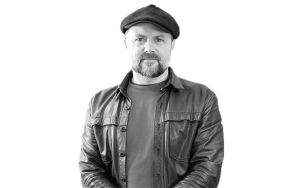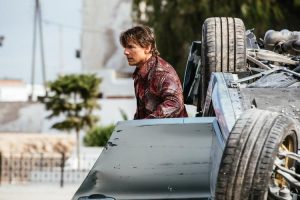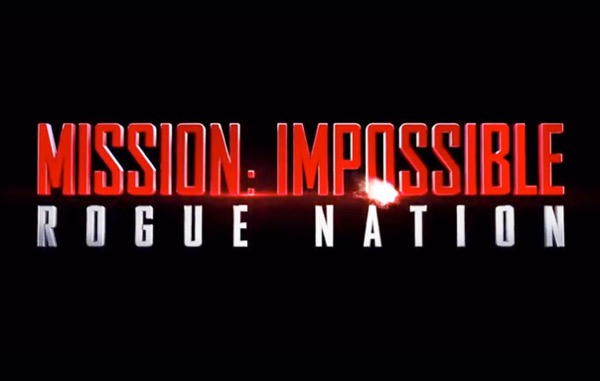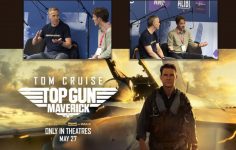In this the second instalment of Scene : Heard we look at the car chase scene in Mission: Impossible – Rogue Nation.
We do so with friend of Resurface James Mather, supervising sound editor on Rogue Nation. James is an Emmy-winning sound editor with film credits including four of the Harry Potter movies, having broken into features via the world of Aardman animation.
Cut to the chase
The car chase: No self-respecting blockbuster action movie should be without one. Many movies down the years have been elevated, some even defined, by this staple set piece. Debate rages online (as online debates will do) as to whether the best one ever is Bullit, or Ronin or the Italian Job or x, y or z. While the hugely successful Fast & Furious franchise seems to contain little else.
Done well the car chase is a money maker, a sure-fire crowd pleaser and the jewel in the crown of an action blockbuster. In this case it was key to a $700m box office smash.
RESURFACE: Car chases are a real statement and can make a movie. How does sound design play its part in this particular one, and what are the decisions that need to be made?
JAMES MATHER: Like every action sequence, the flow and rhythm dictates its ability to deliver an emotional and compelling storyline. In this scene there’s a story in two halves.
The first half was the car chase where the characters were heavily engaged and the dynamics of ‘who’s chasing who’ are established. For this reason it was agreed that the sequence should be FX driven (excuse the pun) with no score at all.
This allowed us to create a visceral chase experience. Within that, Dolby Atmos enabled us to stretch and narrow the mix according to perspective: There are airy exteriors with their high velocity passes and impacts, while the interior shots are suffocating and uncomfortable, the car FX almost became comic relief!
We were sitting wide up against tight to give a ‘push-pull’ sound experience. All this gave the dialogues room to sit comfortably and deliver their humour without having to try too hard.
Then there’s the second half of the scene. Just as we reach a crescendo of raw sound design the music arrives and takes us through the motorbike chase, which has an entirely singular and dialogue free sound scape.
We used the same dynamic ‘push-pull’ style but this time, with the score carrying the adrenaline, the effect is that the audience gets to enjoy the ride from a detached POV rather than being jostled and jolted as they were in the previous scene.
Cruise Control
R: By definition, there’s little subtlety in what we see on screen, but tell us about the less obvious added dimensions in what we hear?
JM: There is a particularly satisfying moment when Ethan and his nemesis are speeding through a canyon of trucks and, as a bike rider myself, I particularly loved carving out the bike engine sounds as they passed the shiny, reflective trucks. This gave an ear popping dimension that would be lost on many people, but anyone who rides would instantly recognise and identify with.
R: By the time you’re handed it to work on, a lot of blood, sweat and money must have gone into making the scene. Is their an inherent weight of expectation that comes with that?
JM: It cert ainly feels that way. One wholly unique aspect of an action scene with Tom Cruise is that he is the man on the screen! As a result, the goal we’re aiming for changes. Rather than using sound design to sell a CG or stunt concept to a viewer, we are trying to recreate the emotion that this man has experienced and that is a totally different requirement than simply fulfilling a VFX ambition. Fortunately we had the ideal benchmark.
ainly feels that way. One wholly unique aspect of an action scene with Tom Cruise is that he is the man on the screen! As a result, the goal we’re aiming for changes. Rather than using sound design to sell a CG or stunt concept to a viewer, we are trying to recreate the emotion that this man has experienced and that is a totally different requirement than simply fulfilling a VFX ambition. Fortunately we had the ideal benchmark.
If we could convince Tom then we had a pretty good chance of giving the audience a thrill too.
I found that recreating the reality with a boost of dynamics so much more gratifying and the true reward was seeing Tom squirm in his chair as the car swerved around a tight bend, or hearing him behind me reacting with a whoop in the final part of the bike chase.
Moving the goalposts
R: From what I recall, the release date, originally slated for December, was brought forward. All the way back to June! Given it was already spring and you were already on the show, what did that mean for you and your team, left with not even half the time you originally thought you had?
JM: We had to re-think how we were going to tackle it as an overall sound team, both editorial and mixing.
Our approach, both to the technology and to the typical definition of roles had to change under the circumstances.
We decided to work entirely in-the-box, such that we could overlap and pick up where each other left off. We could then start temp mixing very early in the process. In so doing, the mixers got involved much further upstream than normal in the process. Conversely the editorial team carried their work through to the final day.
R: Necessity is the mother of invention, of course. From something you might easily see as a crisis came something very organised and slick.
JM: These moments of collaboration are rare, where the beginning of the film making process meets the end. Ultimately it proved as successful as anyone could have wished for – it’s just not as easy as it looks or sounds!
Resurface thanks James Mather.



